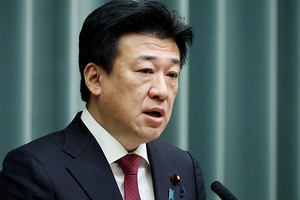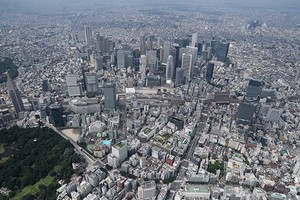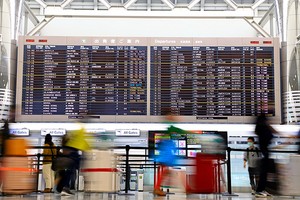THE ASAHI SHIMBUN
March 19, 2025 at 16:45 JST
Areas in Hokkaido saw some of the sharpest rises in land prices in 2024, thanks largely to foreign visitors who have heightened demand for vacation homes and hotels, land ministry data showed.
The price for all categories, including residential and commercial land, across Japan as of Jan. 1 rose by an average of 2.7 percent, the fourth consecutive year of increase, the land ministry said on March 18.
It was the largest rate of increase since 1992, after the collapse of the asset-inflated bubble economy.
Redevelopment in urban centers and tourist areas also pushed up prices.
But the ministry’s figures show that prices are rapidly picking up steam in regional areas of Japan.
BOOMING KUTCHAN
In Kutchan, a town located in the core of the Niseko resort area of Hokkaido, land prices have been rising for more than a decade as wealthy skiers from abroad have learned about the powdery snow conditions there.
The price of 1 square meter of residential land in Kutchan, which is lined with vacation homes and family-run “pension” accommodations, jumped by 9.7 percent from the previous year to 181,000 yen ($1,200) as of Jan. 1.
Furano city, also in Hokkaido, led the nation in terms of fastest rate of increase for residential land.
However, Kutchan’s residential land price was nearly triple the 65,000 yen average in Furano.
Chitose city, also in Hokkaido, topped the nation in terms of rate of price increase for commercial land.
But commercial land in Kutchan is now priced at 156,000 yen per square meter, higher than 128,000 yen in Chitose.
The capacity of lodging facilities in Kutchan has widened to about the same level as the town’s population of 17,000 people.
During the winter season, when the number of visitors increases rapidly, local and Hokkaido-based business operators alone cannot meet the demand.
Therefore, cabs and sightseeing buses with license plates from outside Hokkaido are seen coming and going in the town.
The hourly wages for part-time jobs in the tourism and restaurant industries in Kutchen often exceed those in Tokyo, let alone Sapporo.
The local community now faces a shortage of housing for workers as existing apartments are full.
But construction and real estate companies may now be reluctant to build new housing due to the high land prices and rising costs of construction materials and labor.
‘MOVING HOUSE’
Tokyu Fudosan Holdings, which has operated a ski resort in Kutchan for about 40 years, has come up with a solution.
In December 2024, the company built “Nature Niseko Hirafu,” a dormitory for corporate clients, on company-owned land about 2 kilometers from its ski resort.
The dormitory is a wooden building called a “moving house.” All units are furnished and ready for occupancy as soon as they are transported in trucks and connected to electricity and water supplies.
The 110 units are almost always fully occupied by cab drivers and people working in the tourism industry.
“Investment is expected to continue due to the rapid increase in the number of tourists and rising demand for lodging facilities,” Mikito Yokoyama, director of the Hokkaido Association of Real Estate Appraisers, said.
PRICES UP IN TOURISTY PLACES
Surging tourist figures have driven the increase in land prices in other tourist destinations.
At the Kinosaki Hotspring in Toyooka, Hyogo Prefecture, prices soared by 20.2 percent to 238,000 yen per square meter. That was the sharpest rate of increase for commercial land prices in the prefecture.
Many inns in Kinosaki Hotspring offer lodging and meals separately and are popular among foreign visitors exploring the town.
In Osaka, luxury brand stores along Midosuji street between the Shinsaibashi and Nanba districts remain popular. Rents for these stores are rising, pushing up land prices.
According to a survey by CBRE, a Tokyo-based comprehensive real estate service, the average rent per “tsubo,” or 3.3 square meters, in the Shinsaibashi district from July to September 2024 was 250,000 yen a month, up by nearly 50,000 yen from October to December 2019, the period before the COVID-19 pandemic.
Rents in the district are approaching the level of those in Tokyo’s Ginza area.
(This article was written by Yoko Masuda, Kentaro Uechi, Tomoki Morishita and Yoshinori Doi.)




















A peek through the music industry’s curtain at the producers who harnessed social media to help their idols go global.
A series based on diplomatic documents declassified by Japan’s Foreign Ministry
Here is a collection of first-hand accounts by “hibakusha” atomic bomb survivors.
Cooking experts, chefs and others involved in the field of food introduce their special recipes intertwined with their paths in life.
A series about Japanese-Americans and their memories of World War II